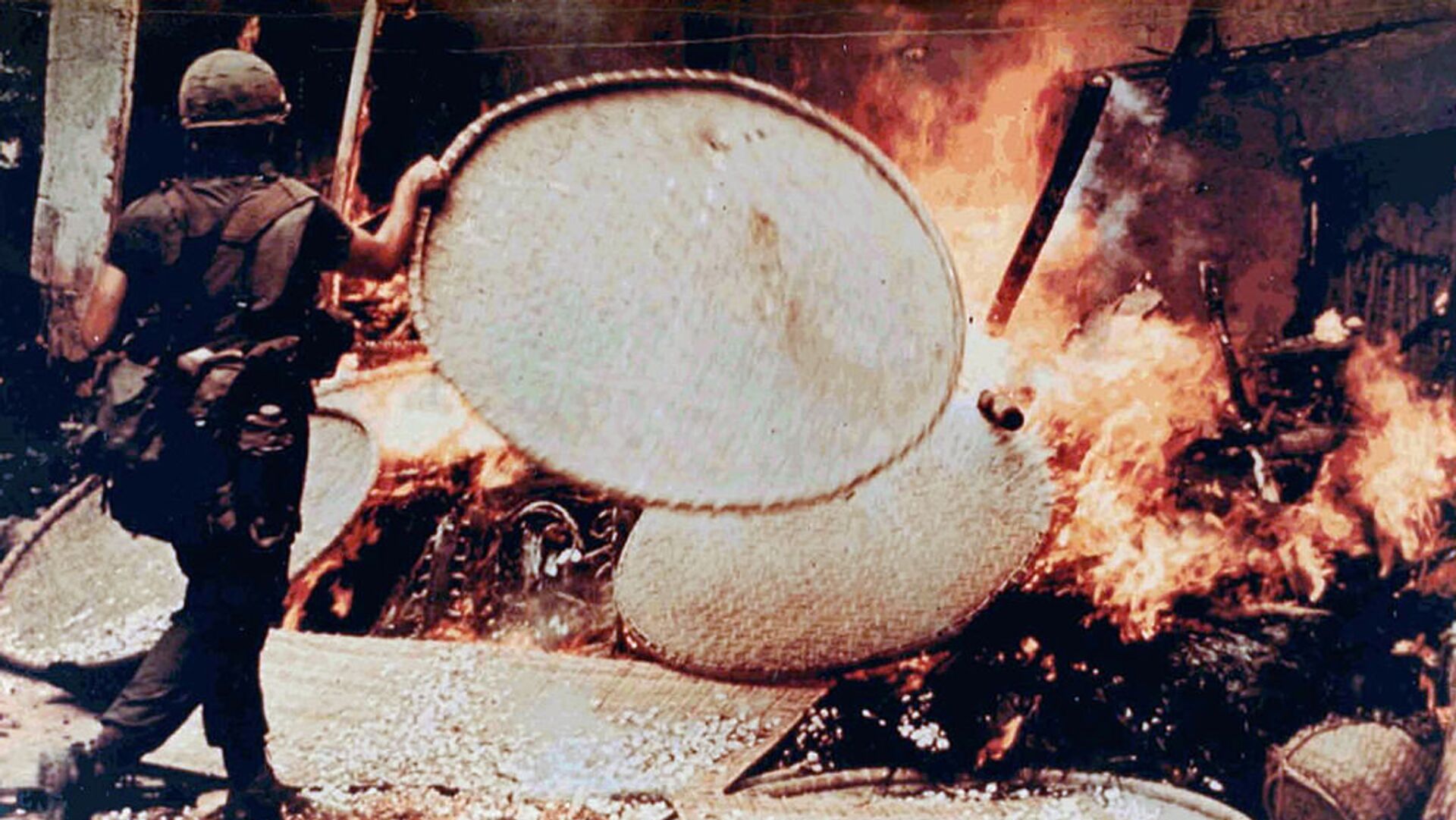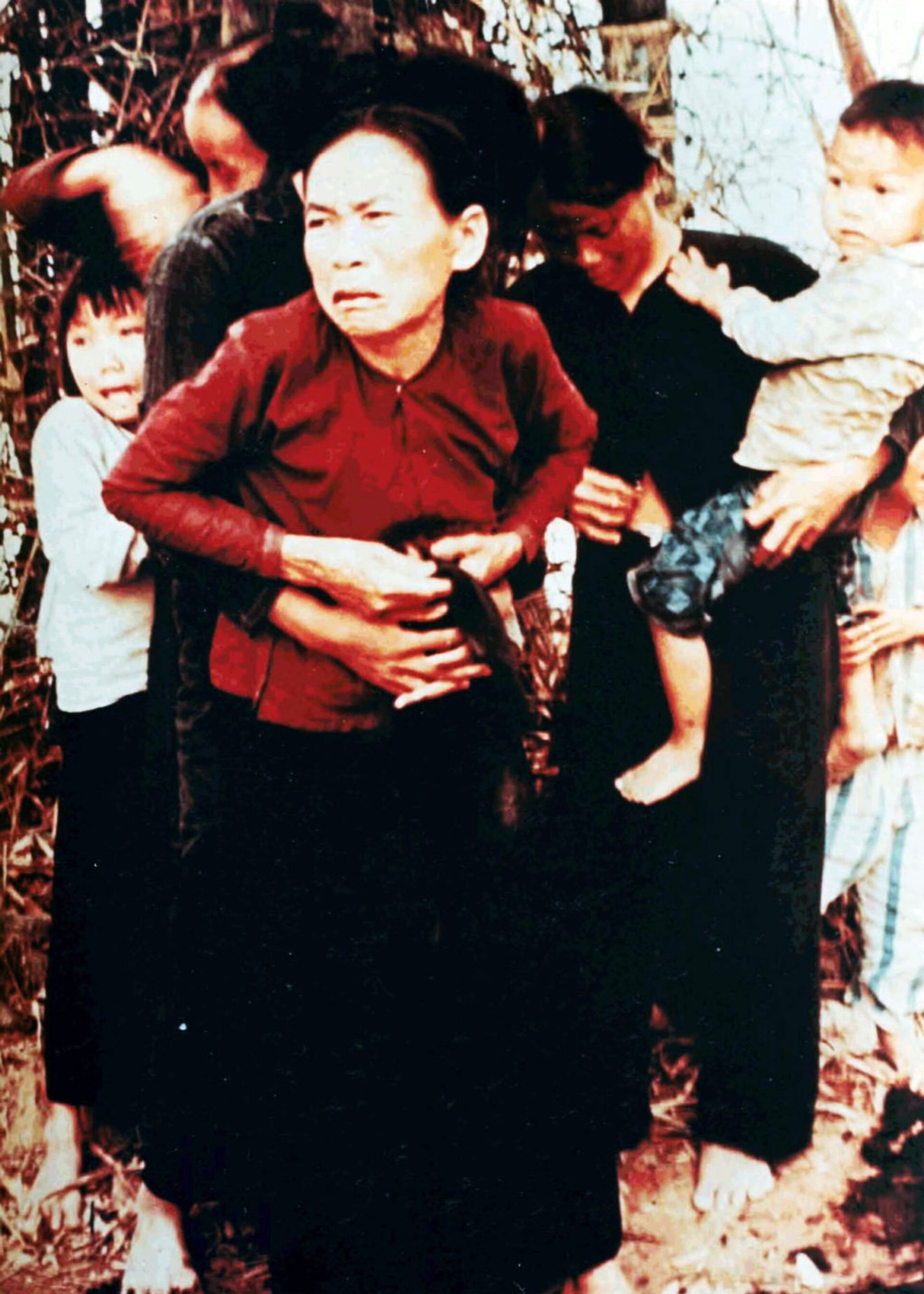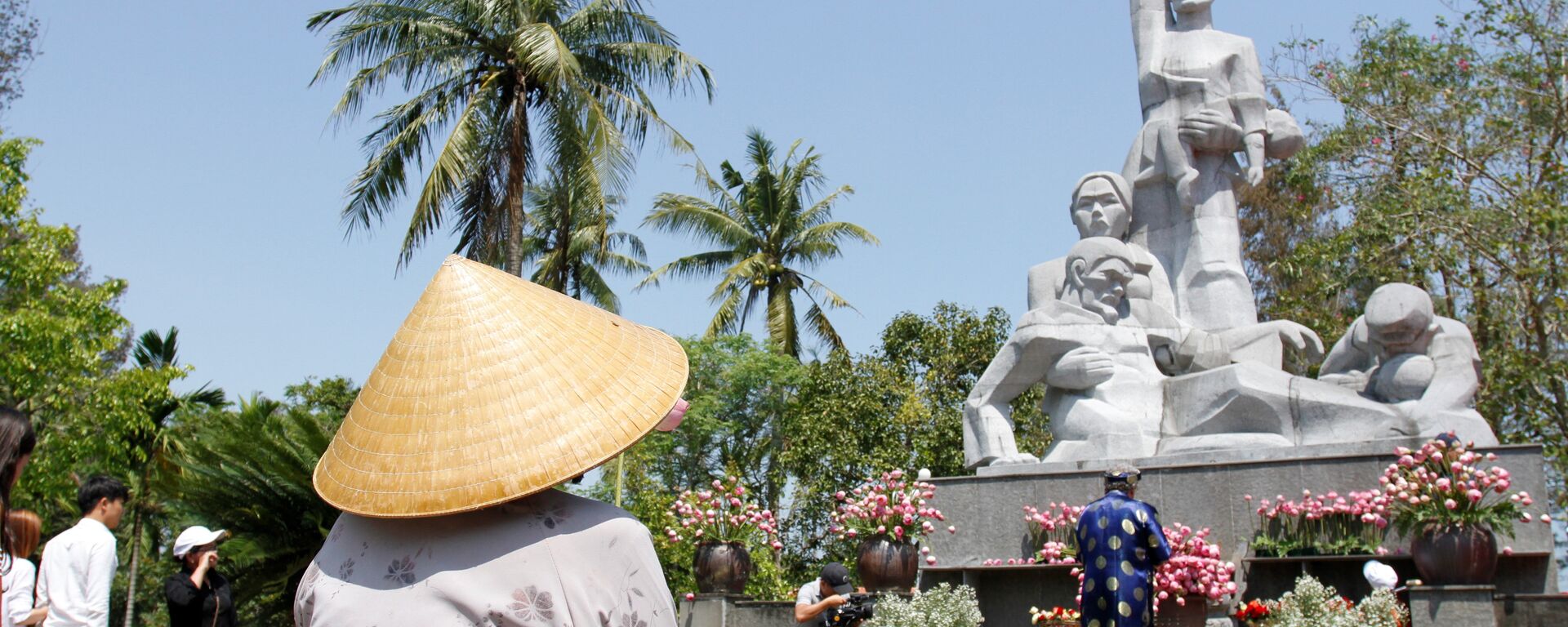https://sputnikglobe.com/20230316/fifty-five-years-since-my-lai-massacre-how-us-soldiers-freely-murdered-vietnamese-civilians-1108469373.html
Fifty-Five Years Since My Lai Massacre: How US Soldiers Freely Murdered Vietnamese Civilians
Fifty-Five Years Since My Lai Massacre: How US Soldiers Freely Murdered Vietnamese Civilians
Sputnik International
Despite the fact that over 500 innocent Vietnamese, including women and children, were murdered by US troops, virtually all of the perpetrators got away scot free.
2023-03-16T15:57+0000
2023-03-16T15:57+0000
2023-03-16T15:57+0000
world
vietnam war
massacre
civilians
murder
seymour hersh
https://cdn1.img.sputnikglobe.com/img/106259/80/1062598003_0:0:1024:577_1920x0_80_0_0_b187f4e6b78e4b9a5e8d140db0ea5553.jpg
On March 16, 1968, a company of US soldiers committed an atrocity that became emblematic of the war the country waged in Vietnam, murdering over five hundred unarmed civilians in a village called Son My located in what was, at the time, South Vietnam.This act of wanton brutality, which involved US soldiers raping and killing innocent civilians indiscriminately, became known in the US as the My Lai massacre, named so after one of the hamlets in the Son My village.Despite the fact that the village did not harbor Viet Cong guerrillas and that no weapon caches were hidden there, soldiers showed no mercy to the Vietnamese civilians, gunning down women and children, throwing grenades into houses and setting buildings ablaze.When the US Army brass became aware of what their brave boys perpetrated at Son My, they initially attempted to cover up the slaughter, with only Lt. William Calley, platoon commander from one of the two infantry companies that descended upon Son My, being convicted on murder charges.Interestingly, none other than future US Secretary of State Colin Powell, an army major at the time, investigated a letter sent by US Army specialist Tom Glen to General Creighton Abrams in November 1968 in which Glen complained about the brutality practiced by US troops against Vietnamese civilians (although he did not refer to the events at Son My specifically).Perhaps unsurprisingly, Powell, who would later help the US promote a false pretext for invading Iraq in 2003, appeared unable to find evidence of any war crimes or facts related to the Son My massacre.The army cover up was ultimately thwarted by investigative journalist Seymour Hersh – the same Seymour Hersh who would later shed light on the tortures in Abu Ghraib and name the likely culprit of the Nord Stream bombing – who brought all the unpleasant grisly details of this sordid affair to the attention of the public.Despite the gravity of the crime committed at Son My, virtually all of its perpetrators faced no reprisals for their actions: while William Calley was sentenced to life in prison in 1971, his sentence was commuted by then-US President Richard Nixon and he was released in 1974 after spending three years under house arrest.
https://sputnikglobe.com/20180316/us-massacre-vietnam-1062601503.html
Sputnik International
feedback@sputniknews.com
+74956456601
MIA „Rossiya Segodnya“
2023
Sputnik International
feedback@sputniknews.com
+74956456601
MIA „Rossiya Segodnya“
News
en_EN
Sputnik International
feedback@sputniknews.com
+74956456601
MIA „Rossiya Segodnya“
Sputnik International
feedback@sputniknews.com
+74956456601
MIA „Rossiya Segodnya“
my lai massacre, us soldiers vietnam war crimes
my lai massacre, us soldiers vietnam war crimes
Fifty-Five Years Since My Lai Massacre: How US Soldiers Freely Murdered Vietnamese Civilians
Despite the fact that over 500 innocent Vietnamese, including women and children, were murdered by US troops, virtually all of the perpetrators got away scot free.
On March 16, 1968, a company of US soldiers committed an atrocity that became emblematic of the war the country waged in Vietnam, murdering over five hundred unarmed civilians in a village called Son My located in what was, at the time, South Vietnam.
This act of wanton brutality, which involved US soldiers raping and killing innocent civilians indiscriminately, became known in the US as the My Lai massacre, named so after one of the hamlets in the Son My village.
Despite the fact that the village did not harbor Viet Cong guerrillas and that no weapon caches were hidden there, soldiers showed no mercy to the Vietnamese civilians, gunning down women and children, throwing grenades into houses and setting buildings ablaze.
When the US Army brass became aware of what their brave boys perpetrated at Son My, they initially attempted to cover up the slaughter, with only Lt. William Calley, platoon commander from one of the two infantry companies that descended upon Son My, being convicted on murder charges.
Interestingly, none other than future US Secretary of State Colin Powell, an army major at the time, investigated a letter sent by US Army specialist Tom Glen to General Creighton Abrams in November 1968 in which Glen complained about the brutality practiced by US troops against Vietnamese civilians (although he did not refer to the events at Son My specifically).
Perhaps unsurprisingly, Powell, who would later help the US promote a false pretext for invading Iraq in 2003, appeared unable to find evidence of any war crimes or facts related to the Son My massacre.
The army cover up was ultimately thwarted by investigative journalist Seymour Hersh – the same Seymour Hersh who would later shed light on the tortures in Abu Ghraib and name the likely culprit of the Nord Stream bombing – who brought all the unpleasant grisly details of this sordid affair to the attention of the public.
Despite the gravity of the crime committed at Son My, virtually all of its perpetrators faced no reprisals for their actions: while William Calley was sentenced to life in prison in 1971, his sentence was commuted by then-US President Richard Nixon and he was released in 1974 after spending three years under house arrest.




